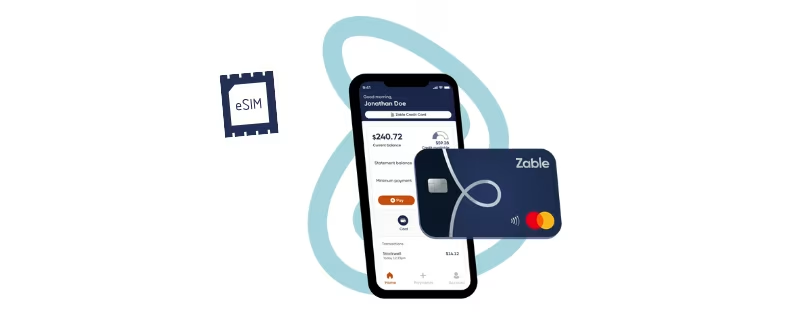
eSIM Choice Isn’t About Who’s Cheapest. It’s About Who Won’t Abandon You Abroad.
When you’re planning a trip, it’s easy to obsess over flight deals, hotel reviews, and what to pack. But there’s one thing that almost always gets treated as an afterthought: staying connected. These days, the eSIM has become the traveler’s best friend — no more fumbling with tiny SIM trays in the airport bathroom, no more wasting half a day finding a local kiosk. You scan a QR code, and boom, you’re online.
But here’s the trap: too many people look at eSIMs the same way they look at budget airlines or discount hotels. Who’s the cheapest? Who’s running a flash sale? Who’s dangling that magical “$1 for 1GB” offer?
On the surface, those deals look irresistible. But connectivity is not a T-shirt you bought on sale that shrinks in the wash. When you’re thousands of miles from home, relying on a single bar of signal to navigate, call a ride, or check into your hotel, the last thing you want is a bargain provider that ghosts you at the worst possible moment.
Choosing an eSIM isn’t about finding the cheapest. It’s about finding the one who won’t abandon you abroad.
The Myth of the “Cheapest Is Best”
We’ve all been guilty of chasing cheap. Maybe it was a low-cost flight that turned into a 10-hour delay with no support. Maybe it was a budget hostel where the Wi-Fi worked only if you stood next to the front desk. Maybe it was the €2 Uber knock-off that left you stranded when you needed it most.
Connectivity falls into that same category. The cheapest eSIM might work fine on day one, but when the signal drops in the middle of a city you don’t know, or you burn through your tiny data allowance before you even reach your hotel, suddenly that “great deal” feels like the worst decision of your trip.
The truth is, when you’re abroad, reliability is priceless.
Why Reliability Matters More Than a Few Euros
Think about the moments you actually need data when traveling:
- Standing outside an airport trying to figure out where your driver is.
- Walking through a new city late at night, needing maps that don’t freeze or drop.
- Trying to load a boarding pass when boarding has already started.
- Texting family back home just to say, “I’m safe.”
These aren’t luxuries. They’re lifelines.
If your eSIM fails you in those moments, it doesn’t matter if you saved €5 on the plan. What matters is that you’re suddenly disconnected, stressed, and scrambling for a solution in a place where everything — language, systems, even time zones — feels stacked against you.
Reliability is invisible when everything works. You don’t think about it. But the second it’s gone, it’s all you think about.
Behind the Price Tag: What Cheap Actually Buys You
Here’s the uncomfortable truth: cheap often comes with trade-offs. An eSIM that costs half the price of others may be cheap because:
- It’s using a weak network partnership with lower coverage in rural or suburban areas.
- It doesn’t include roaming agreements with multiple carriers, meaning you’re stuck with one provider no matter how bad their signal is.
- Customer support is bare-bones (or non-existent), so if something goes wrong, you’re on your own.
- Data speeds may be throttled, leaving you with a connection that looks alive but crawls slower than dial-up.
In other words, that cheap price tag might actually be buying you less network, less support, and less peace of mind.
The Real Cost of Being Abandoned Abroad
Let’s flip the script. Imagine you’re traveling for business, and your cheap eSIM stops working the morning of a meeting. You spend two hours hunting down Wi-Fi, missing calls, and losing credibility in front of a client. Was saving €10 worth it?
Or imagine you’re on vacation with your family, and your kid gets sick. You need to search for the nearest pharmacy or hospital. But your data won’t load. Suddenly, that “bargain” eSIM is the most expensive mistake of your trip.
We don’t calculate those costs upfront, but they’re the ones that matter.
How to Spot a Reliable eSIM Provider
So, if “cheapest” isn’t the right metric, what should you look for? A few signs can help you separate the reliable from the risky:
- Multi-network coverage: A good provider partners with several local carriers in each country. That way, if one network is weak, your phone automatically switches to another.
- Transparent plans: Do they clearly explain how much data you’re getting and whether speeds are throttled? Hidden fine print is a red flag.
- Customer support: Can you actually reach someone if something goes wrong? Email-only support that takes days to reply won’t help you when you’re lost in a new city.
- Traveler reputation: Look for reviews from other travelers, not just the polished marketing copy. Travelers tend to be brutally honest about what worked and what didn’t.
- Fair pricing: Notice I didn’t say “cheap.” Fair means competitive, but not suspiciously low.
A Human Decision, Not Just a Transaction
It’s easy to treat eSIMs like just another checkbox in your trip planning. But the reality is, this is one of the few travel decisions that follows you everywhere. Your flight ends when you land. Your hotel ends when you check out. But your eSIM is with you in every taxi, every train, every late-night walk through a city you’ve never been before.
That makes it a human decision, not just a financial one. You’re choosing a partner that either has your back abroad — or doesn’t.
The Peace of Mind You Can’t Put a Price On
I’ll be honest: I’ve been burned. I once picked the cheapest eSIM for a week-long trip, thinking, “It’s just data, what could go wrong?” On day three, my connection dropped in the middle of nowhere. No maps. No ride-hailing apps. Just me and a lot of panic.
It taught me something I’ve never forgotten: the best eSIM is the one that doesn’t make you think about it. The one that just works quietly in the background, so you can focus on enjoying your trip.
When you’re abroad, peace of mind is worth more than any discount code.
Final Thought: Choose Trust, Not Just Price
At the end of the day, the eSIM you choose says something about how you value your travel experience. Do you want to gamble with the cheapest, hoping it holds up? Or do you want to invest a little more in something that guarantees you won’t be left stranded?
Travel is unpredictable enough — flights get delayed, luggage goes missing, and weather changes plans. Your connectivity shouldn’t be another uncertainty.
So yes, compare prices. Be smart with your budget. But don’t let “cheap” blind you to what really matters: reliability, trust, and the comfort of knowing your eSIM won’t abandon you abroad.
Because when you’re standing in a foreign city at midnight, trying to find your way back to your hotel, you won’t be thinking about the €5 you saved. You’ll be thinking about whether you made the choice that kept you connected when it mattered most.










